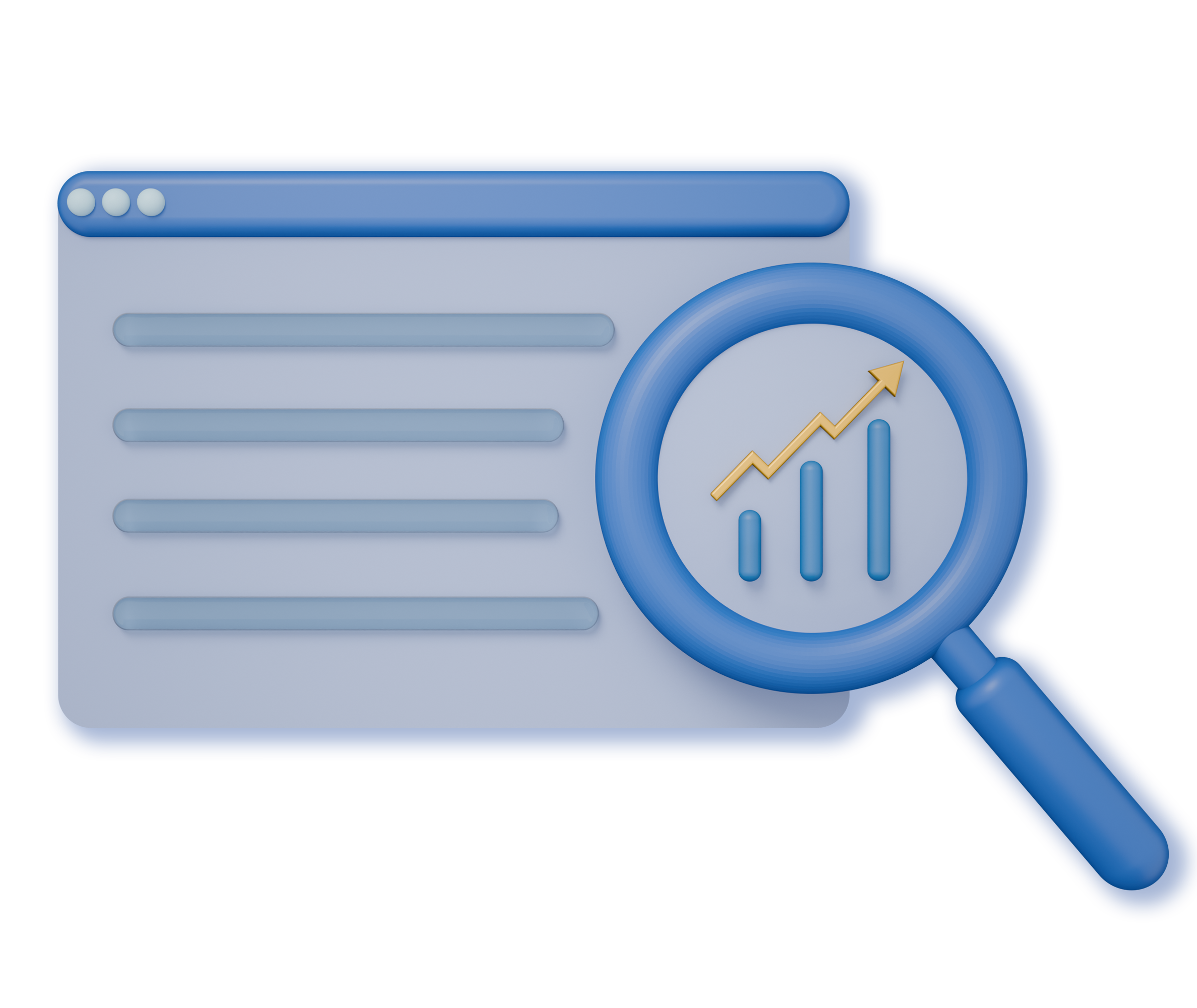Creating SEO-friendly content takes effort, time, and a healthy dose of patience.
And, it’s reasonable to know if all the work is paying off.
In this guide, you will know how and what metrics exactly to check and analyze.
Let’s start!
What is Content Performance Analysis in SEO?
Content performance analysis in SEO refers to the process of assessing how well your content performs in search engines․
Have you recently published a blog on your website? If yes, then good job, but have you also checked after a while how it’s doing? Maybe it’s ranking for some keyword or taking even the first position on Google. Or, maybe it’s not performing well at all.
There are answers to all these questions. But in order to reveal those, you will need to regularly analyze everything you publish. This way you can:
- Understand what works
- Identify what does not work
- Improve SEO content strategy based on data
- Optimize resources and invest them in strategies that deliver results
For example, if you found out that quizzes or downloadable resources boost engagement metrics, you can report that to your team so they can use them actively in your content strategy.
But which content metrics should you track and analyze regularly? Let’s find out together.
Content Performance Metrics That Matter
Before heading to the main tools for checking content performance, let’s break down the main metrics we usually track and analyze for SayNine’s content, and you can too.
Engagement metrics
Engagement metrics are data points that measure how actively users interact with content, such as views, average engagement time, bounce rate, scroll depth, likes, comments, and shares.
For example, if your blog receives 5,000 views, an average engagement time of 3 minutes, and a lot of shares on social media, these numbers show that readers find the content interesting and engaging.
SEO metrics
SEO metrics are data points that measure the performance of your website’s content on Google. These include metrics like traffic, keyword rankings, and backlinks.
If a certain page moves to the top three Google results for a specific keyword, gains backlinks from relevant websites, and sees an increase in organic visits, then congrats. Your content is doing quite well in search rankings.
Conversion metrics
Conversion metrics are data points that measure how effectively content drives desired actions, such as a user signing up for a newsletter or making a purchase. These include metrics like conversion rate, leads, and ROI.
The final goal of any content is to make a conversion. While educational and informative content is also our priority, we also try to write pieces that guide our audience toward taking meaningful action.
Let’s say you want to measure how a specific content worked in terms of ROI. All you need is to divide the amount of revenue generated by that content by the total cost of producing and promoting it, then multiply the result by 100 to get the ROI percentage.
Content Metrics: GEO Vs. SEO
SEO is important, but today, GEO is also gaining popularity.
While SEO helps your content rank in search engines, GEO makes sure your content also becomes visible in AI-generated answers on platforms like ChatGPT and Google SGE.
We covered the most important content metrics that we recommend you check. But we also did some research for this blog and came across an interesting LinkedIn post by Neil Patel, where he discusses the importance of AI search results. Here’s what he says.
The sooner you realize AI doesn’t reward general advice, it rewards ultra-targeted, bottom-funnel content, the faster you’ll start getting “ChatGPT told me to buy from you” calls.
But this is not everything.
Their team also did research that shows how LLMs look at content compared to traditional search engines like Google.
They surveyed 73 marketers to see what factors they thought mattered the most. Let’s break down the main takeaways. As you can see,
- GEO (orange) dominates in areas like content formatting, structure, and citations.
- SEO (blue) remains stronger in content quality, topical thoroughness, backlinks, and domain trust.
Here’s a detailed analysis.
- Content Quality: SEO scores higher (9 vs. 7).
- Content Formatting – GEO performs better (10 vs. 8), meaning generative optimization tools tend to structure content more cleanly and effectively.
- Structure – Traditional SEO slightly lags behind GEO (9 vs. 8).
- Domain Trust – Traditional SEO leads here (10 vs. 7), showing that authority and backlinks are still stronger in SEO-focused strategies.
- Links – Traditional SEO performs better than GEO (10 vs. 4).
- Citations – GEO outperforms SEO (9 vs. 5).
- Content Freshness –Both score equally (8).
- Topical Thoroughness – SEO outperforms GEO (10 vs. 7).
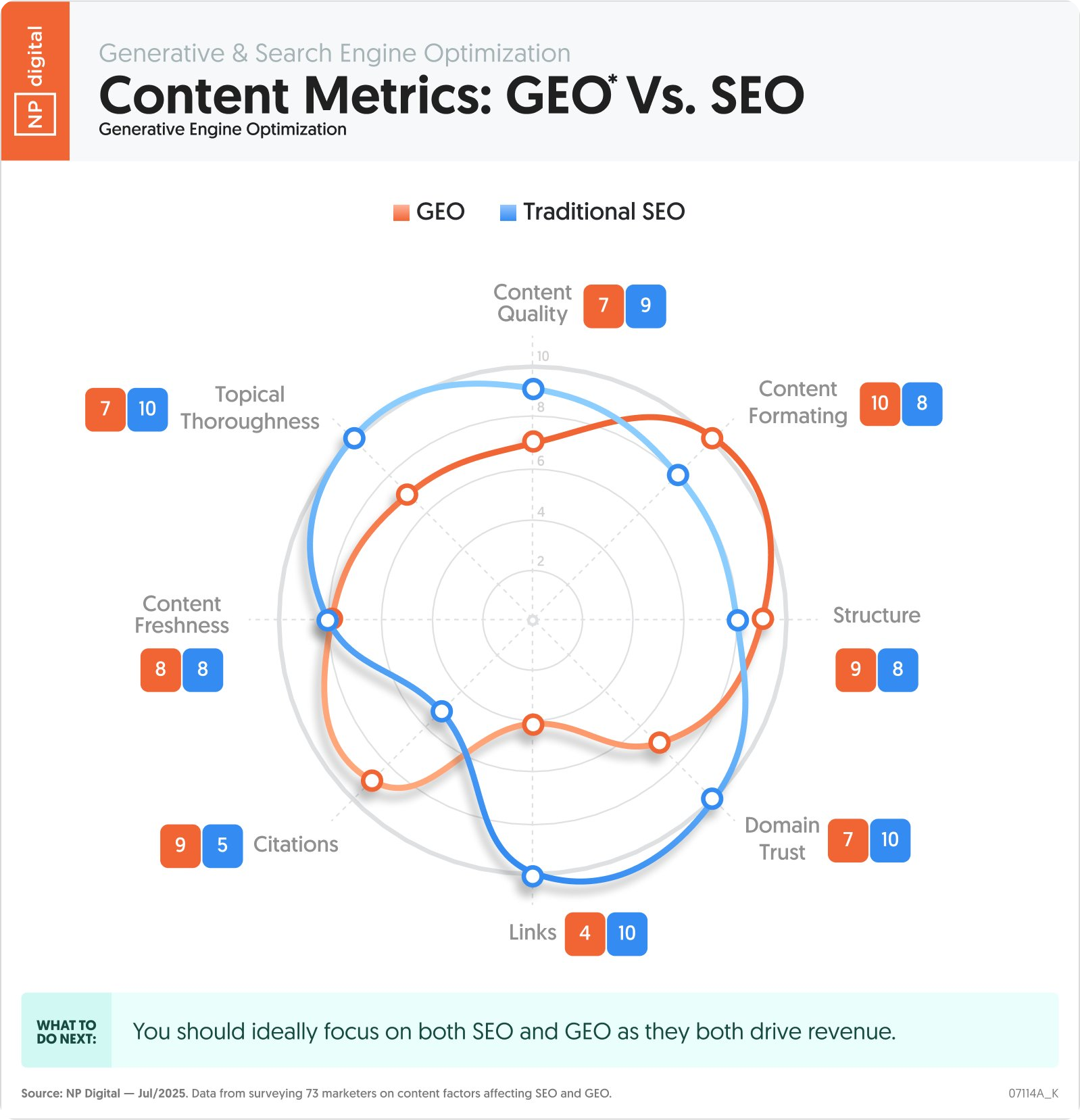
So the bottom line is that you need to optimize your content for both GEO and SEO if you want to achieve better content performance.
How to Measure Content Performance in SEO: 3 Handy Tools
Google Search Console
To measure content performance on Google Search Console, take these steps.
Step 1: Sign in to your GSC account and add your property, aka the domain you want to analyze,
Step 2: Go to “Search results” from the “Performance” section.
Step 3: Review the “Total clicks” and “Total impressions” for a given timeframe (e.g., 3 months).

Step 4: Scroll down to “Queries” to see what search terms users have used to find your website.
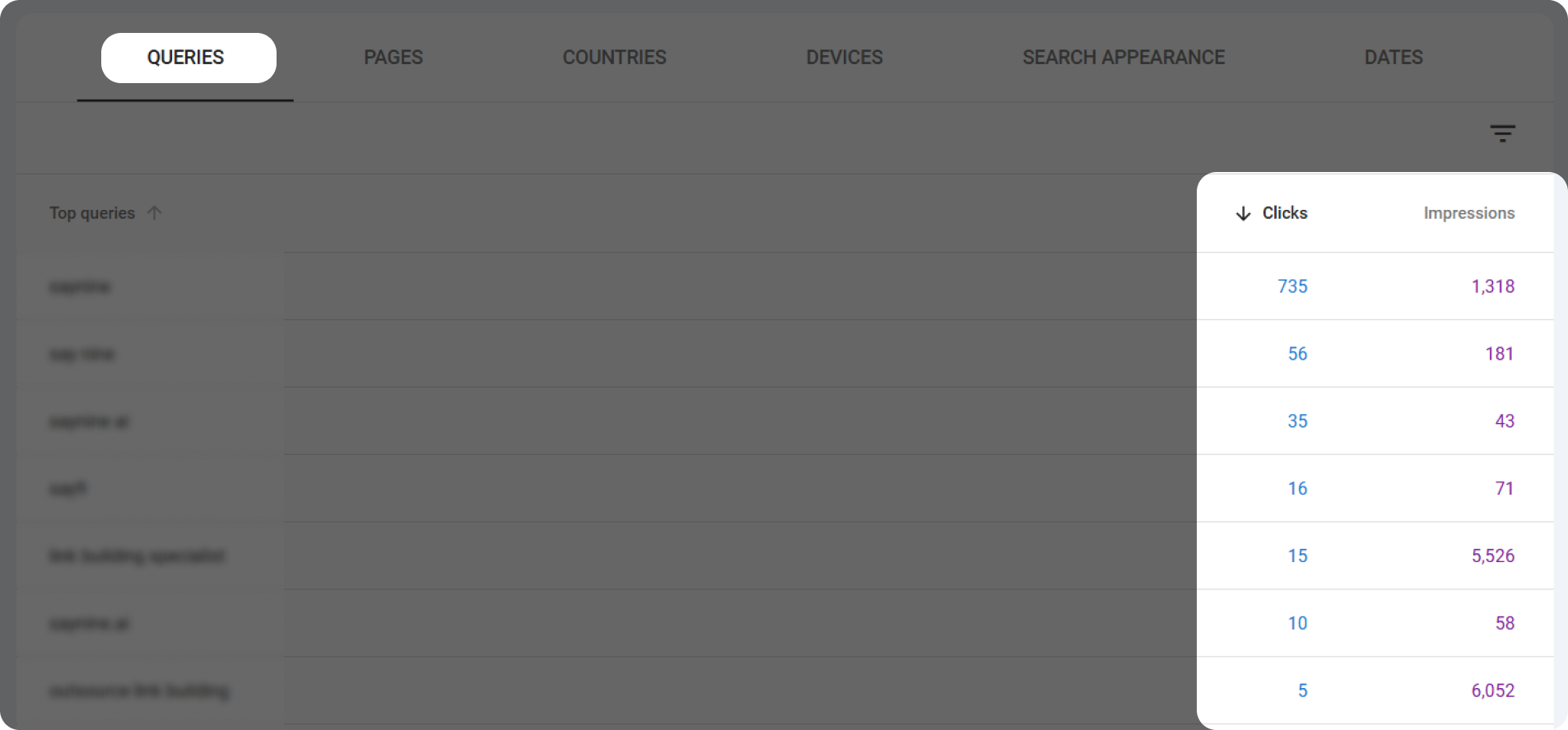
Step 5: Click “Pages” to see which pages bring in the most Clicks and Impressions. The more clicks and impressions you have, the better.
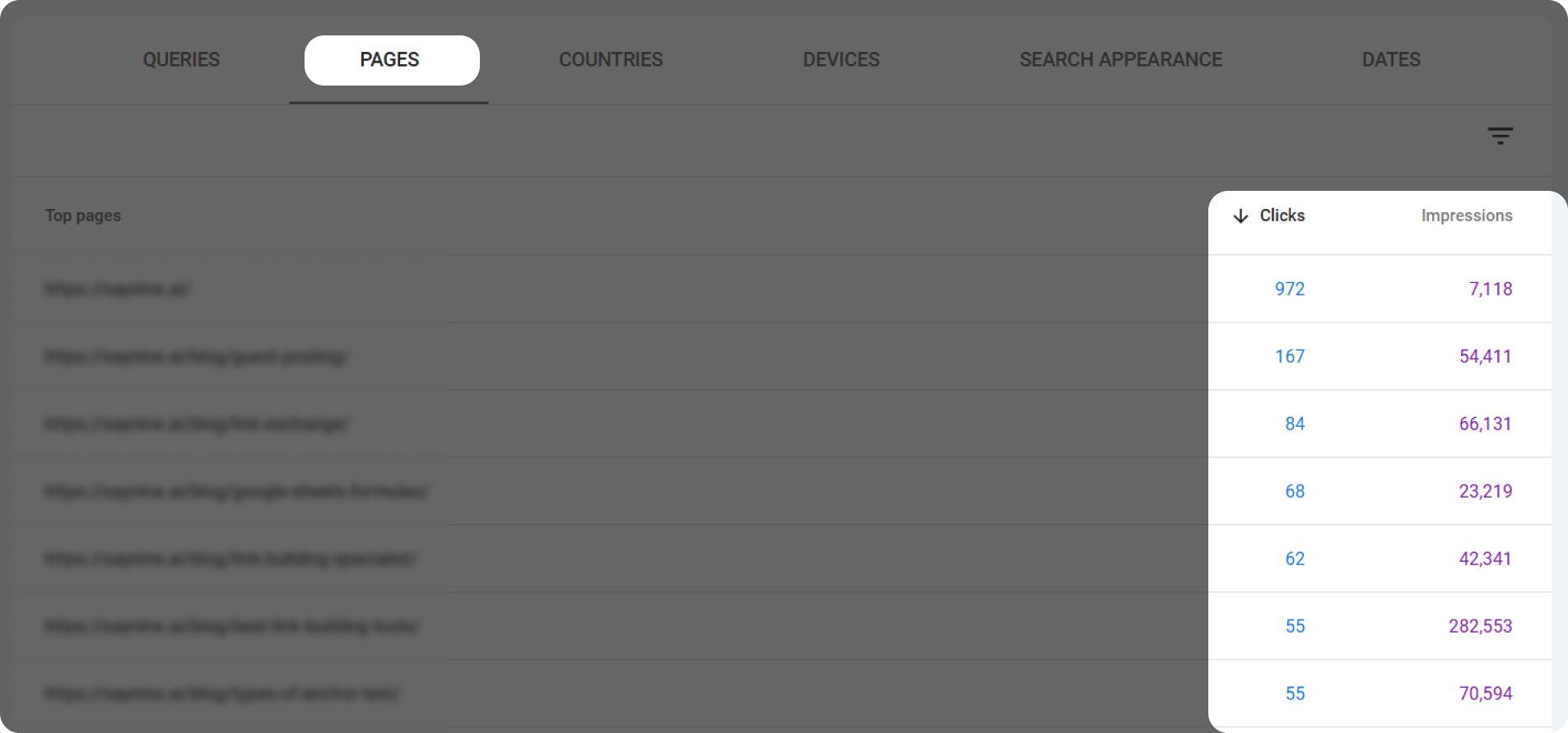
Google Analytics
Here’s what measuring content performance looks like with Google Analytics.
Step 1: Sign in to your GA4 account and pick your property.
Step 2: From “Reports,” click “Acquisition” and then “Traffic acquisition.” Here you can see how much traffic your website has, as well as all the sources of traffic, such as organic, direct, etc.

Step 3: Then, from “Engagement,” click “Pages and Screens NEW.” Here, you can analyze metrics like active users, average engagement time, views, bounce rate, etc.

Step 4: You can also click “Landing page” to check content engagement metrics for different landing pages, such as your product/service pages.
Ahrefs
Step 1: Type in your domain into “Site Explorer” to review essential metrics like organic traffic, keywords, and backlinks.

Step 2: Then, click “Organic traffic” to see which pages bring the most visitors. You can also compare to a custom date to see the traffic change for a particular period of time.
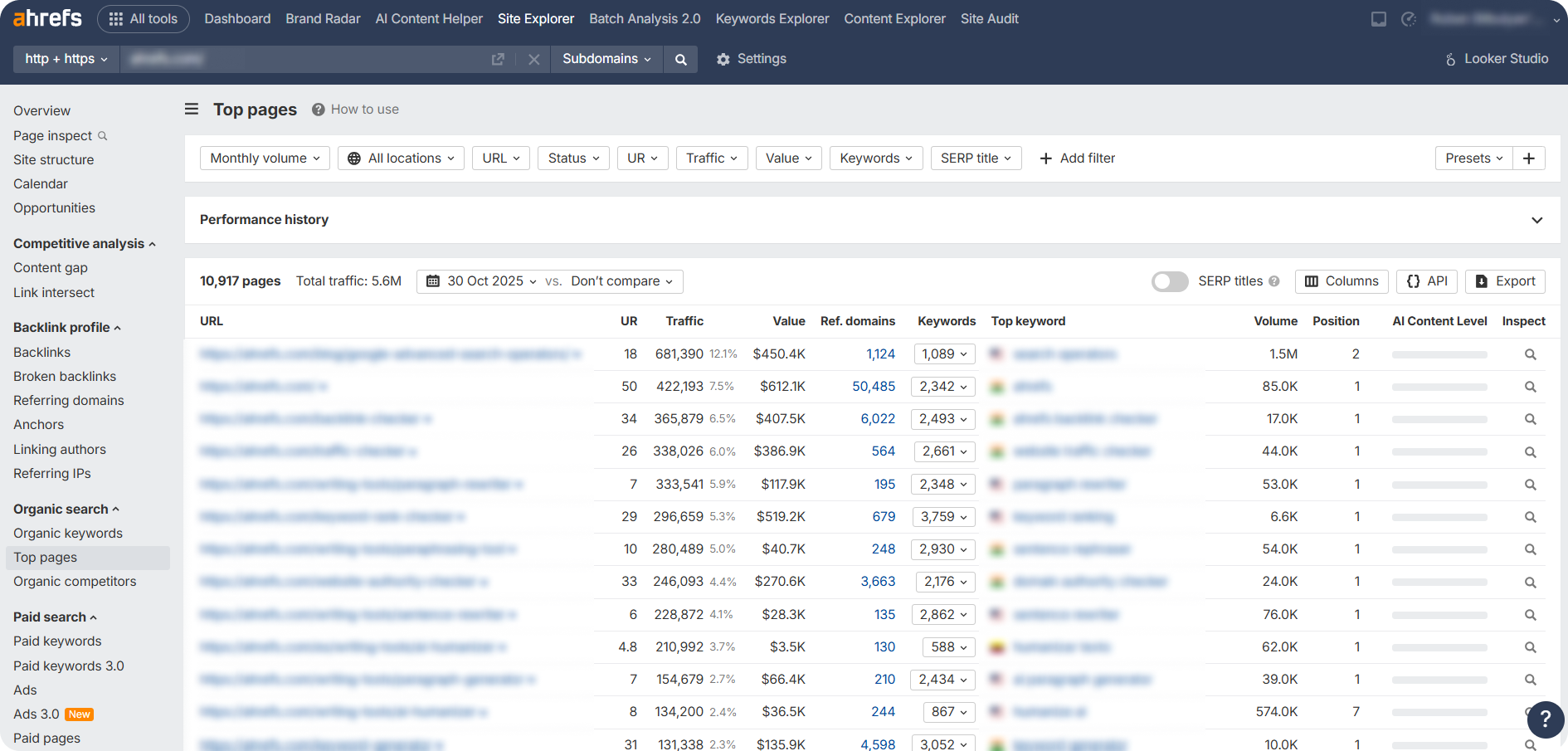
Step 3: Next, click “Organic keywords” to learn more about keyword rankings for target pages. This allows you to understand whether you are on the first pages or some positions have dropped.
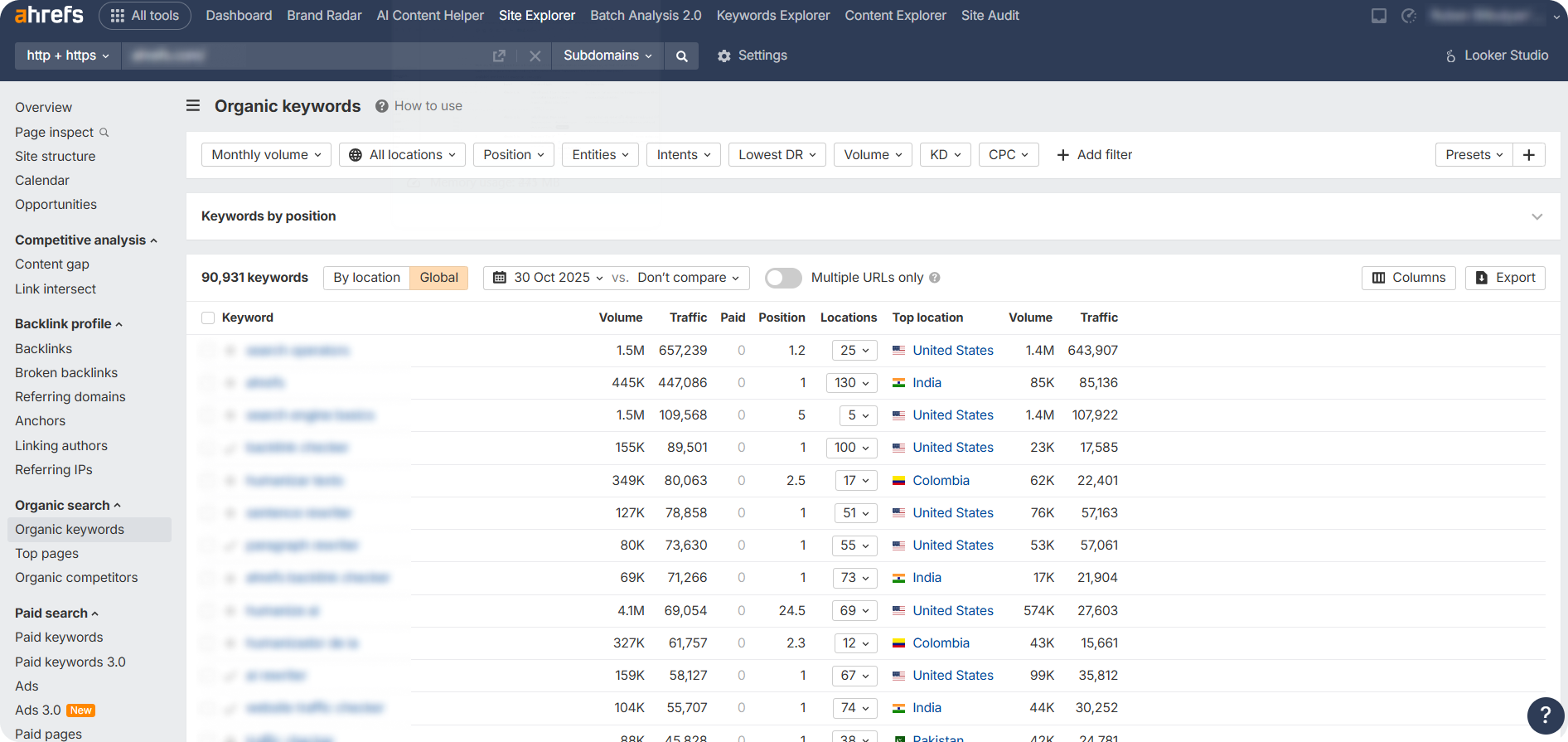
Step 4: Check the “Backlinks” to see if your content is attracting links from other sites. Whether organically or through strategic link building, it’s important to have some backlinks to your site, as Google uses them to discover and index your pages more easily.
Step 5: Run a content gap analysis to find and fill all the gaps in your content, so you can cover topics and keywords your audience is searching for, outrank competitors, and answer all the questions people have.

These simple steps can reveal what’s working and what tweaks should be made for higher rankings and more engagement.
What’s Next? Here’s an Action Plan
You’ve got the basics of content tracking with different tools, but collecting data is one thing, and knowing how to use and act on these insights is a whole different story.
Here are some practical steps to take to help you boost your content performance in search engines.
- Metrics are important, but not that much: While metrics give you an idea of how well your content is performing in general, they don’t tell the full story. So, we recommend focusing more on the insights they reveal rather than numbers.
- Update content regularly: Published a new article? Good job, but take the time to run a content audit to ensure there are no broken links or old information. Google loves fresh and relevant content, so it always shows users the most up-to-date, useful, and engaging results first.
- Improve internal linking: Add internal links in your content to improve the user experience and help search engines better understand how different pages are related on your website.
- Focus on creating original and unique content: Want to improve content performance? Focus on creating content that answers users’ questions and offers fresh perspectives. We highly recommend interviewing experts and incorporating their insights to add credibility, depth, and real value to your content. Here’s what Ryan Law, the director of content marketing at Ahrefs, adds.
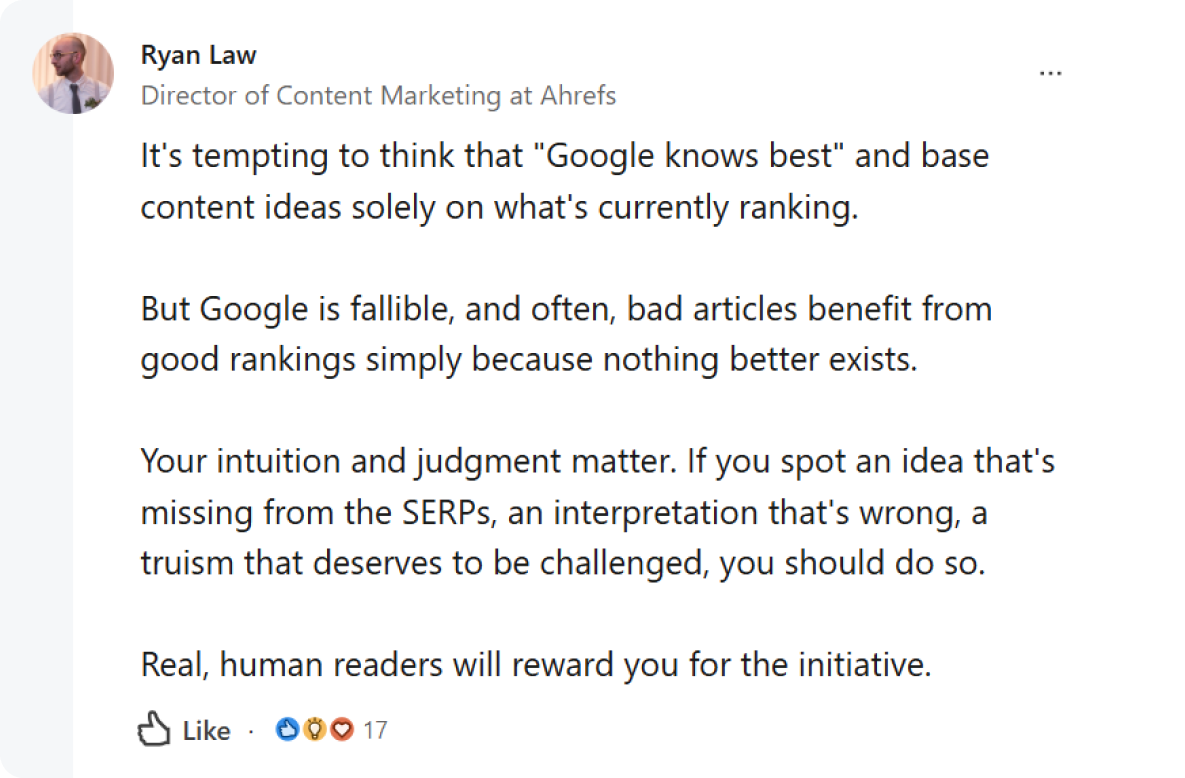
And that’s a wrap.
If you need a hand in writing compelling content, you can leave that task to us. At SayNine, we provide professional content writing services that improve content performance, rankings, and audience engagement.
FAQ about content performance in SEO
What does content performance mean?
Content performance measures how well content (e.g., blog posts) performs and resonates with your target audience.
How do you know if your content is performing well?
You can tell if your content is performing well by evaluating important metrics like traffic, engagement, and conversions.
What is a KPI in content writing?
A KPI in content writing is a specific metric used to assess how well your content is performing in relation to your objectives.
